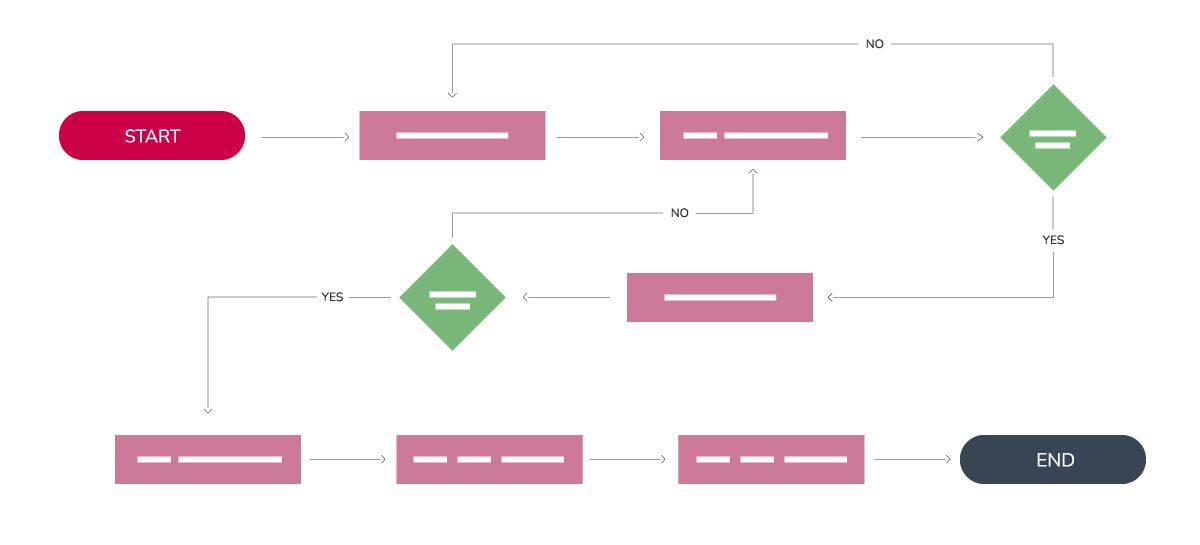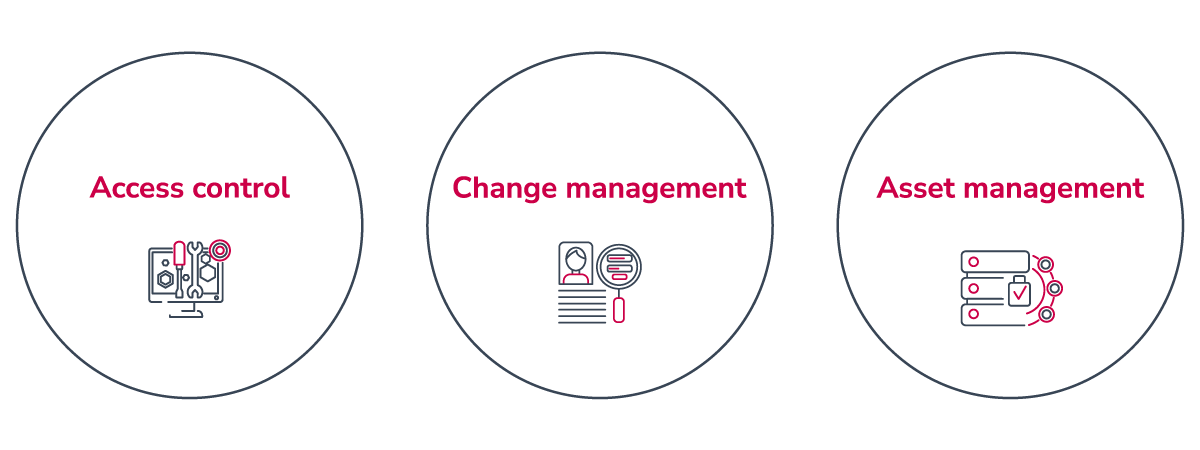Data mapping is not just another buzzword; it’s a vital resource for any GRC program as it helps elevate trust with customers, partners, and vendors.
By mapping data sources, types, and flows, you comprehensively understand your data landscape, uncovering hidden connections and risks.
In this article, you’ll learn how data mapping helps optimize data usage, protect clients’ data, and ensure regulatory compliance (GDPR, CCPA, and others).
Let’s get started!
Table of Contents
- What is data mapping?
- What about compliance programs?
- Key steps in building a data map
- Why is data mapping so important?
- Compliance management and its connection to data mapping
- Key takeaways
What is Data Mapping?
Imagine you and your friends searching for a pirate’s hidden treasure. Unfortunately, you only have a vague idea of its location. What would be great to have? A map to guide you through tunnels and traps!
This is probably the best analogy for data mapping: using a map to guide you through the tunnels and traps of an organization’s data practices.
However, data mapping is more than just an exciting quest. It provides transparency and a comprehensive understanding of your organization’s data landscape. This includes data sources, data types, and data flows.
What About Compliance Programs?
Data mapping is an essential component of any compliance program because it helps your organization identify risks, optimize the use of data, better protect client data, and meet regulatory requirements.
A data map as part of the data life cycle is an essential resource of a GRC program as it improves transparency around their data practices. Adding another level of trust with customers, partners, and vendors.

Key Steps in Building a Data Map
- Identify what categories of personal data your organization collects. This step emphasizes the importance of compliance management in preserving data privacy.
Also, it’s here where data mapping can help strengthen efforts to adhere to regulations and standards such as GDPR and CCPA.
Identifying where personal data lives and how it is processed builds and maintains consumer and stakeholder trust over time. This is vital to your compliance program’s success. - Identify where the data is stored. This includes software and systems, databases, internal repositories, and any other places where personal data may be stored and processed.
Furthermore, you need to know where the data flows so you can understand how it’s being used (purposes) and if it’s adequately protected (security controls). - Identify cross-border requirements that are relevant to data mapping. This includes understanding if personal data is being transferred to other countries or jurisdictions, the legal basis for the transfer, and whether any additional safeguards are required.
This helps you ensure that personal data is being transferred lawfully and in compliance with applicable regulations. - Finally, once you have a complete map of the organization’s data practices, you can use it to ensure compliance with data protection regulations such as GDPR. Moreover, you can identify any areas where you need to obtain consent, place appropriate safeguards, or make other changes to protect personal data.

Why is Data Mapping so Important?
Well, it is not just important; it’s essential for efficiency and agility. As of today, some level of data mapping is a legal requirement.
In the context of GDPR, it is a crucial step towards compliance because it helps organizations identify the personal data they collect, where it is stored, and how it is used.
A data map also helps organizations respond more efficiently to data subject access requests and breaches, which are critical requirements under GDPR.
With data mapping, you can streamline your data management processes, reducing the time and resources needed to identify, locate, and manage your data, increasing your profitability and operational efficiency.
In general, data mapping is a best practice in any compliance program for a few reasons:
- Identify Risks: Data mapping helps organizations identify potential privacy and security risks associated with their data practices. By understanding (in detail) the data life cycle, you can identify areas where data may be vulnerable.
- Improve Data Governance: It can help organizations improve their data governance. It identifies areas where data practices can be improved, such as: strengthening security measures – reducing data retention periods – obtaining consent from data subjects where required.
This can help organizations improve their overall data management practices and reduce the risk of data breaches. - Analytics and product optimization: By understanding the workflow, organizations can use data as an asset to generate insights for product feature optimization, for example.
- Increase Transparency: Data mapping increases transparency around an organization’s data practices, which can help build trust with internal and external stakeholders.
Compliance Management and its Connection to Data Mapping
There is a significant overlap between data mapping information and other security controls relevant to the software industry across different standards.
Data mapping emphasizes the importance of compliance management and how it can strengthen efforts to adhere to regulations and standards.
This is possible because data maps tell you what categories of data are processed and where, allowing you to access a visual map of your data.
Why is this so great?
Because it will enable you to identify potential gaps in your compliance with various frameworks and regulations.
This information can help you implement more appropriate controls, such as:
Access Control
Access control is a fundamental principle of information security. It is an ISO 27001 requirement that access to information and processing facilities be restricted to authorized users.
Data Mapping allows compliance managers to identify the systems and applications that store or process sensitive information. Moreover, they can use this information to implement access controls to ensure that only authorized users can access sensitive data, aligning data mapping efforts with the overall compliance strategy and risk management goals.
Change Management
Change management is a critical control in ensuring the integrity of an organization’s systems and data. For example, SOC 2 requires that changes to systems and data are managed and tracked to ensure that they are authorized, tested, and implemented without disrupting business operations.
By mapping the data flow within your organization, compliance managers can identify the systems and applications critical to business operations. Also, managers can use this information to implement the right changes to ensure consistency.
The results?
Much simpler data management processes and fewer resources needed to identify, locate, and manage data.
Asset Management
ISO 27001 requires that assets are identified, classified, and appropriately protected. The data map records can identify the systems and applications that store or process sensitive information.
This information can be used to implement asset management controls, and it will ensure all assets are identified, classified, and protected. The protection should be based on the data type that the assets process and store.
This is key in avoiding costly fines and legal issues, saving your business money while protecting your reputation.

Key Takeaways
- Data mapping is vital for compliance programs, enabling risk identification, optimized data utilization, client data protection, and regulatory compliance.
- Building a comprehensive data map involves identifying personal data categories, determining storage locations, and addressing cross-border requirements.
- Leverage data mapping to identify privacy and security risks, improve data governance, optimize analytics and product development, and foster trust with stakeholders.
- Mapping your data also strengthens compliance management, enabling gap identification and implementation of access control, change management, and asset protection measures.
- A centralized GRC program with data mapping capabilities optimizes risk assessments, decision-making, and cost reduction. In addition, all these help you ensure compliance with standards and safeguard valuable data.
In a nutshell:
A centralized GRC program associated with data mapping capabilities can bring many benefits to your organization, such as:
- Streamlining risk assessments and compliance processes
- Improved decision-making
- Cost reduction.
This helps you better adhere to regulations and standards such as ISO 27001 and SOC 2, enhancing your compliance program. Also, it helps you implement appropriate remediation measures to effectively protect what is most valuable in this treasure hunt: data.
Looking for a better way?
With built-in SOC2 controls, policy management, visual reports and structured workflows, StandardFusion turns SOC2 compliance into a walk in the park. Our customers have never felt better prepared for their audits than they do now!
Manage data processing activities diligently. Doing this not only boosts your operational efficiency, but also strengthens trust with clients and stakeholders. This gives you a competitive edge.
Discover how StandardFusion empowers organizations to streamline compliance processes and understand the power of data management.
